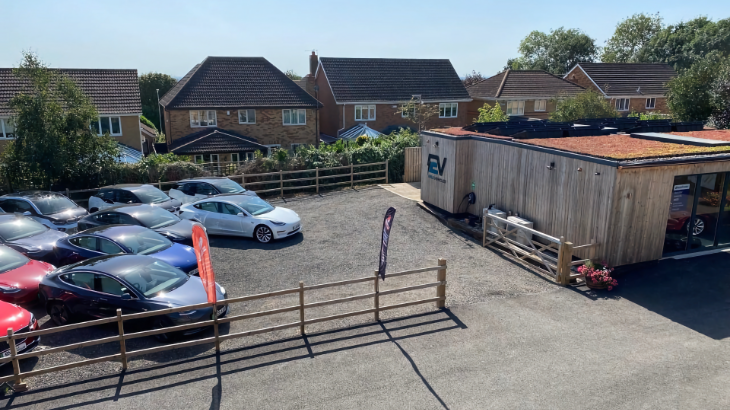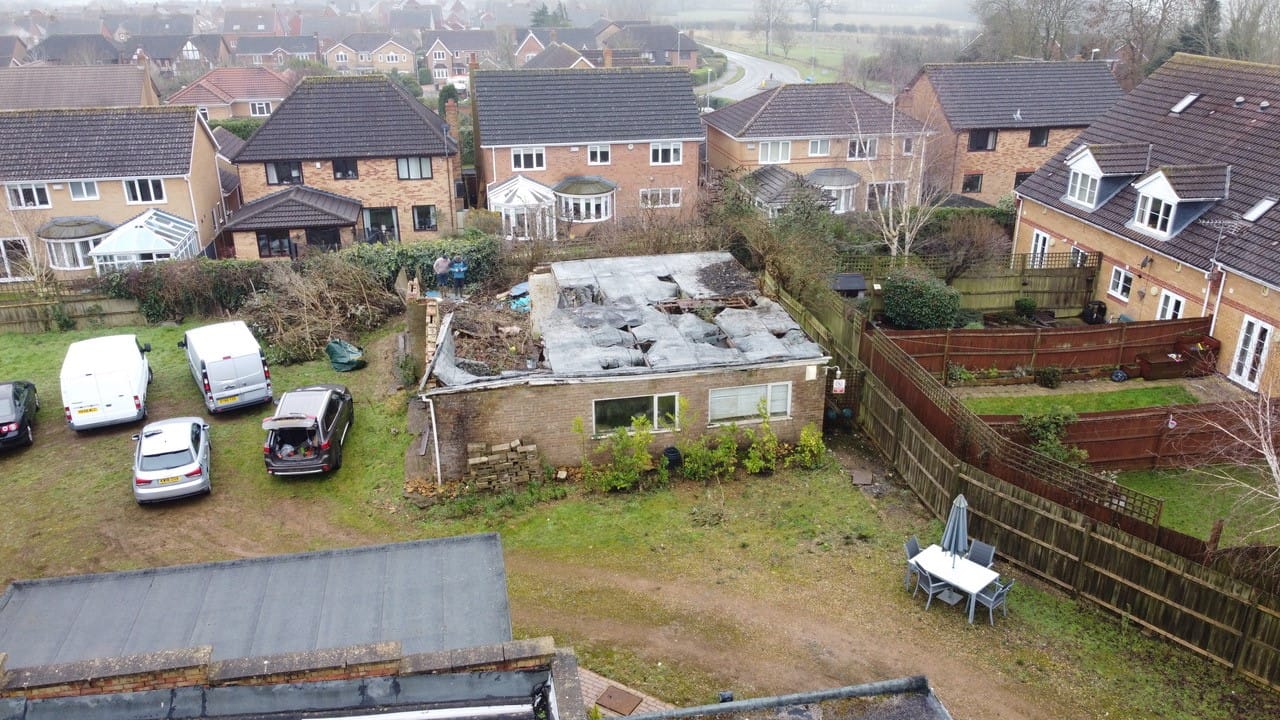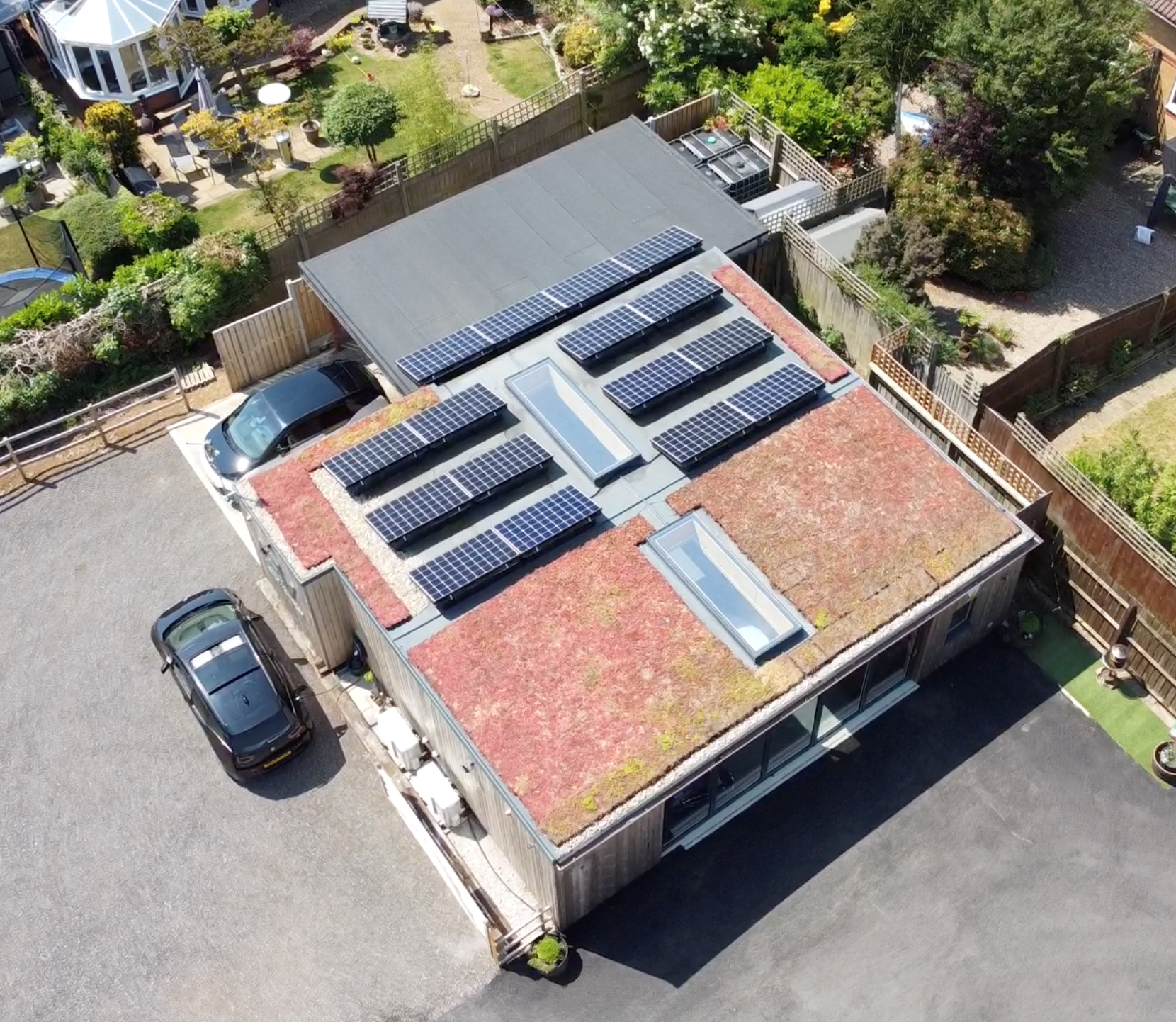ERLS Vehicles - Second-Hand Electric Vehicles for a Greener Tomorrow

I made a recent visit to ERLS Vehicles in Brixworth to find out more about ‘The UK’s First, Fully ECO-Showroom’. ERLS have received a number of awards and nominations for their business, namely as a Finalist in AutoTrader’s ‘Sustainability Initiative Award 2023’ and Highly Commended in Car Dealer Magazine’s Used EV (Electric Vehicle) Dealership of the Year Awards 2023. They hope to apply for a King’s Award in 2025.
The business is a father-son team, with highly complimentary skills and expertise. Martin, father, is a builder and surveyor and son Magnus, having worked for Tesla, is the car expert. Both have a love of the car industry but also feel the responsibility to make a positive impact on the planet. They are fully aware that the motor industry is viewed in a negative light in terms of environmental impact. Their motivation is to disrupt the traditional system and their eco-showroom is intended to inspire and influence other car dealers.
Eco-Showroom

Under Martin’s guidance, they transformed a dilapidated building on a brownfield site in Brixworth into a sustainable, renewable eco-showroom with an A5 EPC rating which they hope will serve as a template and inspiration for car showrooms of the future.
The building is visually attractive and could be mistaken for a Nordic ski chalet/sauna. The cladding comes from Finland and is called ‘Thermowood’. It is sustainably sourced and heated to a high temperature which renders it more durable and stable. It has 20% more thermal resistance than regular timber panelling. The benefit of the excellent insulation is that the showroom maintains its ambient temperature well. This keeps the inside warm and cosy in the winter and cool in the summer, reducing the need for additional heating or AC.
They have 16 solar panels on the roof which provide enough energy to run the showroom and to keep the cars charged up. Any surplus is redirected back to the grid. Next to the solar panels lies a sedum roof. The sedum sequesters carbon dioxide and attracts many birds and insects. Martin admits it does require some maintenance and has found a local supplier of natural fertilizers to give it a new lease of life for 2024. Next on the to-do list was water – for which they installed 4 large rainwater tanks, fed by copper guttering, which provide water for washing the cars and other requirements. The copper guttering filters out any nasties, meaning no need for chemical cleaning agents.
Throughout the build, the team used sustainable, recycled and/or re-usable materials. Out went plasterboard and in came birch-faced plywood boarding, which can be re-purposed. Out went uPVC doors and windows and in came aluminium, which are easily recycled. As discussed previously, out went most of the plastic guttering to make way for copper. For the flooring, the team used recycled rubber interlocking floor mats. To complete the showroom the team used their contractors’ surplus materials, or supplies they already had for the bathroom, kitchen area and furniture.
It is clear to see that every decision they made on the build had sustainability as a key factor.

They have plans for another 44 solar panels on the other building on the site and hope to develop a bigger community area, to attract the local EV community who can charge their cars, along with giving them space for more vehicle storage.
I used my time with Magnus and Martin to discuss a few of the common questions, concerns and misconceptions surrounding EVs and summarise my conclusions below.
Electric Vehicles – can they help build a more sustainable and healthy future?
The World Health Organisation completed a landmark study on clean air in September 2021. The study estimates that pollution is responsible for an estimated 4.2 million deaths globally per year with up to 36,000 of these within the UK alone, and vehicle emissions are a significant part of this. In 2022, according to Department of Energy Security and Net Zero figures, carbon dioxide emissions in the transport sector increased by an estimated 3.8% (4.2 Mt) from 2021, with it remaining the largest emitting sector in the UK, accounting for 34.0% of carbon dioxide emissions.
Unicef published a report entitled the Toxic School Run which highlights the particular risks posed by toxic air pollution, with an estimated 11,000 new daily child-asthma cases worldwide.
Provided EVs are charged using a renewable electricity supply, they can dramatically reduce pollution, particularly in urban areas.
What about the EV-charging infrastructure?
This does seem to be improving with the government pledging £1.3bn of infrastructure funding before the next election as part of its EV Infrastructure Strategy. There is grant support available to encourage charge-point installation and make EVs more accessible.
The Electric Vehicle Home-charge Scheme (EVHS) offers a grant of up to 75% for home charge-point installations
The Workplace Charging Scheme offers vouchers to support charging point installation on business sites
The On-street Residential Charge-point Scheme is also available for Local Authorities
West Northamptonshire Council has secured funding via the Local Electric Vehicle Infrastructure (LEVI) Capability Fund
And an FT.com report from January 2024 stated that BT were exploring the potential to upgrade up to 60,000 cabinets to roadside electric vehicle charging stations if a pilot scheme is successful.
EVs are too expensive
It is undeniable that some new electric vehicles (EVs) currently come with a high initial price tag, which understandably may discourage many prospective buyers. However, to gain a comprehensive understanding of their cost in comparison to petrol or diesel cars, one must examine the total cost of ownership (TCO). This encompasses the initial purchase, maintenance and repairs, insurance, and energy (fuel or electricity). When all these factors are considered, despite the high purchase price, the TCO of EVs proves to be highly competitive with that of petrol or diesel vehicles. The Vauxhall eCorsa is the same price as its combustion engine equivalent. In the second-hand market, the prices are very similar. Other costs can also be less. Whilst insurers are wary of more expensive parts (primarily the batteries) with fewer moving parts (20 compared to 2000), EV services are cheaper and less frequent.
Batteries – this remains a contentious area – are the negative impacts reducing?
Considerable progress has been made on lessening the negative environmental impacts of mining for battery production. Along with the concerns on the social impacts of child labour, activism and exposure has resulted in better outcomes. A recent winner of Prince William’s Earthshot prize is Green, Renewable, Sustainable Technology (GRST), a Hong-Kong-based project pioneering a low-impact method of producing EV batteries. GRST’s method involves building the battery with a water-soluble binding composite rather than traditional connection options. This makes it easier to recover valuable materials in post-use recycling. It also extends the battery’s working life and reduces emissions associated with manufacturing by up to 40%.
To conclude, ERLS Vehicles is definitely worth a visit. You will be thermo-warmly welcomed and will find Magnus and Martin full of knowledge and passion for EVs and their role in a more sustainable future.


